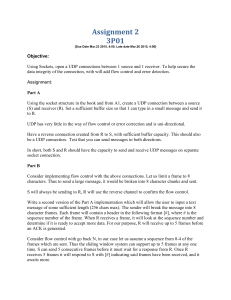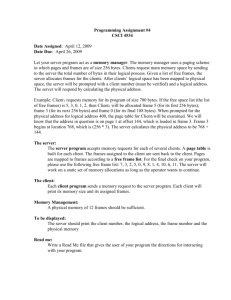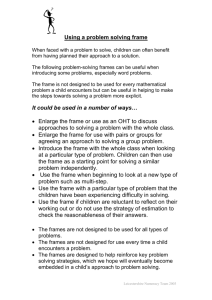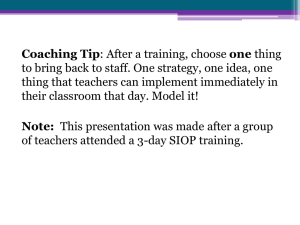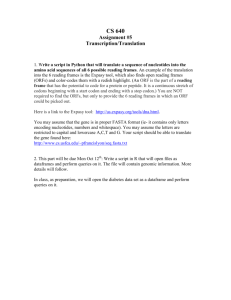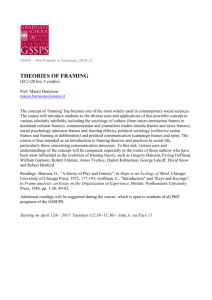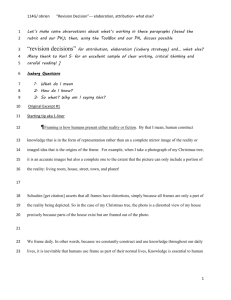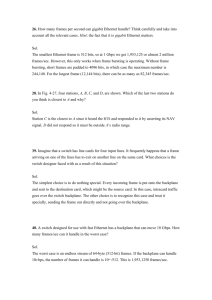Math Intervention
advertisement
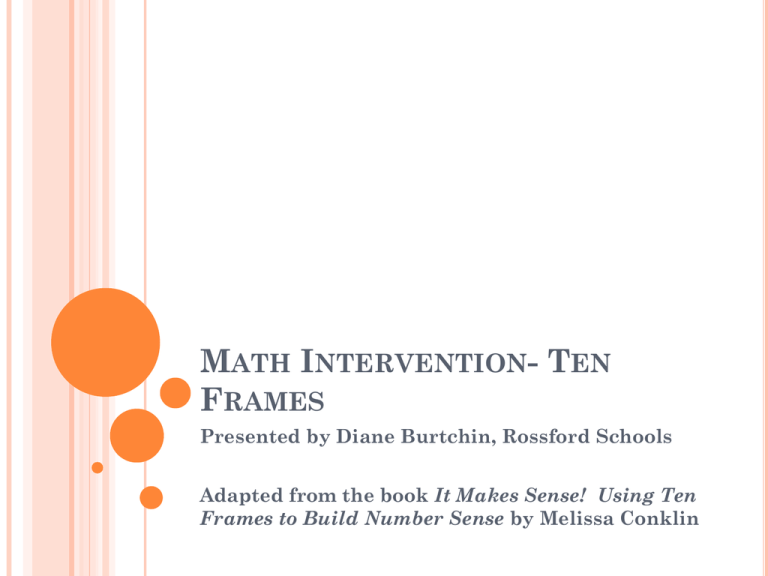
MATH INTERVENTION- TEN FRAMES Presented by Diane Burtchin, Rossford Schools Adapted from the book It Makes Sense! Using Ten Frames to Build Number Sense by Melissa Conklin GOALS FOR THIS SESSION To learn about ten frames and double ten frames To learn how to use ten frames to teach/reinforce a variety of concepts To walk away with at least three activities that could be used in classrooms WHAT IS A TEN FRAME? A ten frame is a five by two array used to support the development of the landmark numbers of 5 and 10. WHAT IS A DOUBLE TEN FRAME? It is to ten frames used to support the development of the landmark numbers of 10 and 20. It is also designed to support addition strategies (such as making a ten) and place-value ideas (such as building 14) WHY USE TEN FRAMES? State standards require students to solve addition and subtraction problems using a variety of strategies, including models. Ten frames are one such model, and they can help students efficiently develop an understanding of these operations. USING THIS RESOURCE Use the Chapter Connections to the NCTM Focal Points to select lessons appropriate for your grade level Determine which of the three types of lessons you would like to use Routines- short lessons that should be revisited several times a year in order to build students’ number sense (5-20 minutes) Games- a fun way to practice the skills (10-30 minutes) Problem-Solving lessons- require students to think and reason in order to deepen their understanding of number (full class period) LAYOUT OF A LESSON Lesson Overview- description of what students will be doing and the math goals Time- gives a general prediction of time needed Materials- basic list of materials needed and the number of sets (most can be found in the Reproducibles section; will also need counters) Key Questions- suggested questions to promote student thinking, class discussion, and ability to assess what students know Teaching Directions- step by step lesson plans with references to the key questions and what a student might be thinking Additional Teacher Insights- “Math Matters!”, “Teaching and Technology Tips”, “A Child’s Mind…”, “Differentiated Instruction”, “Time Saver”, “Extend their Learning”, “Teacher Reflections” ROUTINES USING TEN FRAMES These are short mini lessons that develop/foster new learning about number Great opportunity to revisit skills from the previous year and to encourage communication about mathematics (process standard/new Mathematical Practices) When used often they help students gradually understand number and build basic fact fluency Should be done on a regular basis until mastery occurs- can use morning or afternoon time, transition time, etc. Have materials ready ahead of time to save time TIME TO TRY THEM OUT! Look through the components and discuss what you need to be prepared for with your students Walk through the lesson…share comments at each stage GAMES USING TEN FRAMES These are designed to encourage students to rely on strategy and/or thoughtful decisions Includes: memory games, more than less than ideas, combinations of 5 and 10, comparing numbers and equations; landmark numbers If you take the time to teach the game to the entire class or the same group of students you will be working with, then you will save time later on It is a good idea to prepare materials ahead of time (colored cardstock, laminate, use letters or stickers, etc.) Think classroom management strategies as well Modeling the games is a good idea! Use recording sheets while the students are playing and help them record their own thinking LET’S PLAY! Discuss possible management issues and how you might address them What information might be helpful for the student to record? For the teacher to record? PROBLEM-SOLVING WITH TEN FRAMES Some lessons follow a set up with an introduction (connection to prior learning), exploration (opportunities to discover, deepen, and extend their understanding of number), and summary (cement their understanding and communicate their thinking) It could take more than one period initially You state the problem but do not tell the students how to solve the problem (have them talk to one another about what it is they are trying to solve and how they might approach it) Use the key questions to guide the conversation (you may have to start them on a path to solving the problem or start with a simpler problem) You are the facilitator! SO LET’S PROBLEM-SOLVE! How might you adjust this activity for your learners? Take a closer look at the assessment piece and share your thoughts on what you see. QUESTIONS? Please call or email me if you have questions or would like additional pieces of this workshop (you are also welcome to borrow the book)




